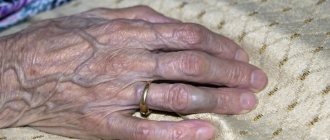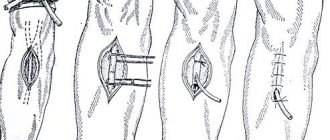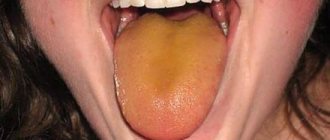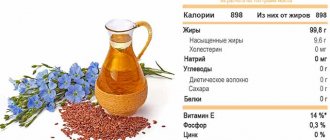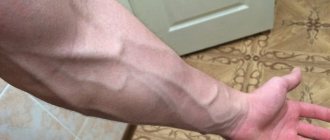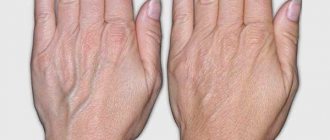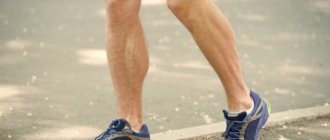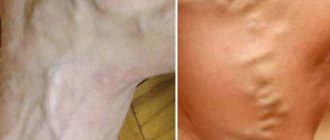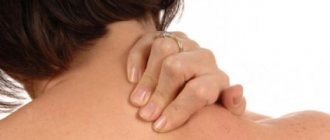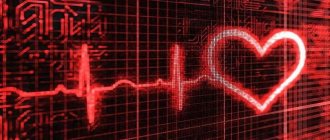Humans have veins throughout their body. Only in most cases they are securely hidden under the skin. But there are situations when they appear, and sometimes they also hurt.
Arm veins are a group of blood vessels that carry blood directly to the heart. One of their main functions is reverse circulation. That is, blood from tissues is collected both at the superficial and deep levels and sent to the heart.
In this orderly system, which works normally without interruptions or any symptoms, malfunctions may begin due to one reason or another. And then the person experiences a fairly diverse set of negative manifestations - pain, heaviness in the hands, a feeling of tightness, etc. Naturally, living with such symptoms is difficult, since hands are one of the main tools in everyday life.
Therefore, if any problems appear with the veins in your arms, you should not delay it - you need to consult a doctor as soon as possible. You can start with a therapist, but most often this problem is dealt with by a phlebologist or angiosurgeon. Despite the fact that arm vein disease is a rare phenomenon, it can significantly reduce the quality of life of the person experiencing the problem.
told AiF.ru about why the veins in the hands begin to cause discomfort to a person .
Varicose veins - an aesthetic defect or a serious disease? More details
Reasons for the problem
The reasons for the appearance of veins on the hands are of different nature. They can appear from overexertion when carrying heavy objects, overheating of a person in a bathhouse or sauna, from prolonged exposure to a hot climate, smoking, from a fragile physique or age-related changes. Most often, these manifestations are temporary and do not require serious treatment. Early changes on the hands look like blue nodules and will disappear when the provoking factor is eliminated.
But not everything is so harmless when the cause of this phenomenon is varicose veins - a disease associated with a decrease in the tone of the venous walls. Quite often, the disease is accompanied by pain, which can also be signs of other diseases: arthritis, arthrosis, chondrosis and neuritis. That is why in such a situation, correct diagnosis and appropriate treatment are extremely important.
How to properly care for skin with dilated capillaries
Caring for such a unique skin type must be comprehensive. This requires a certain regime and self-discipline. First of all, avoid stimulants such as alcohol and cigarettes, as well as spicy and hot foods. Do not cleanse your skin with hot water, menthol soap, certain oils (such as eucalyptus), scented fragrances, chlorinated water, and all types of strong astringent or irritating cosmetics.
Do not use granular peels, expose your skin to sunlight or use a tanning bed. The sauna is also not recommended. Avoid stress and sudden changes in temperature, as well as increased physical activity. It is important to eat a diet rich in vegetables and fruits.
Skin with thin capillaries should be washed with warm water, handling it extremely delicately to avoid mechanical damage. It is important to use cosmetic preparations intended specifically for such skin - creams, tonics or serums that will not irritate it (remember that this is hypersensitive skin), and which contain substances that tighten and constrict blood vessels. It is best to give preference to pharmacy cosmetics that do not contain parabens, fragrances and other similar substances. Try to choose natural cosmetics based on herbal ingredients - they are safer for the skin and have a more delicate effect on it.
For this skin type, enzyme peels will be effective, which do not stimulate blood circulation and at the same time exfoliate dead cells. It is imperative, regardless of the season, to use SPF and PA filters to protect the skin from radiation.
Use the right creams. Oral medications designed to seal blood vessels from the inside also deserve attention. An excellent care product is hydrolates, which have almost the same properties as oils, but act more gently and are suitable even for very sensitive skin. They nourish and moisturize it, relieve flaking and dryness, narrow capillaries and reduce the vascular network on the face.
Couperose skin before and after care
How to determine
It is possible to diagnose the disease using studies: Doppler sonography, MRI of the veins, ultrasound of the vessels of the upper extremities. The most modern diagnostic method for the occurrence of symptoms of varicose veins and phlebitis (inflammation of the walls of the veins) is considered to be duplex sonography (ultrasound examination of blood vessels).
Is it possible to clean the vessels? More details
Why do the veins in my arms disappear?
It all depends on human physiology. In general, it is normal if the veins are located between the “petals” of the muscle, and when they are stretched from stretching the joints and become visible under the skin. It happens that a person’s muscles are often tense and the veins are always located above the muscles, which is why they are visible.
If they relax their muscles psychologically and without control, they will fail. Most likely this is due to vasodilation. When it’s hot outside, blood vessels dilate, blood flows faster, veins swell and bulge.
This is not the case in cold weather. For example, my hands were under physical stress all the time, but not in such a way that I was doing anything with my hands. So, when it became stuffy, and even after drinking alcohol, the veins always swelled.
With age, they began to swell when it’s hot outside and the arms are down. Many people also associate this with increased blood pressure, but there is definitely no connection. I measured it myself, the pressure is normal, there is noise in my head from the heat and the veins are swollen.
In men who do physical labor or simply have sinewy veins, their veins also bulge. Probably there is not enough fat, so the veins are visible.
This article will talk about why veins protrude on the hands of some people quite often, as well as ways to get rid of this not always aesthetic phenomenon.
To restore your hands to their former attractiveness, you can resort to hardware intervention, drug treatment, or eliminate the disease using folk remedies. The choice of technique often depends on the cause of bloating.
All factors that influence why veins swell in the arms can be divided into hereditary and acquired. The first group includes genetic predisposition. There are much more other reasons.
Treatment
To treat identified diseases, minimally invasive methods are used: sclerotherapy, phlebectomy and laser therapy. Physiotherapeutic procedures are also included in the treatment: electrophoresis with venotonics and angioprotectors, darsonvalization, magnetotherapy, ultrasound treatment (destroys blood clots), balneotherapy (whirlpool and contrast hand baths with bischofite, radon, hydrogen sulfide), massage compression. Another popular method is hirudotherapy (treatment with leeches). They produce a special enzyme that has a positive effect on the circulatory system and increases the elasticity of tissue in the affected area. Despite the somewhat unconventional nature of the method, it is considered quite effective.
To choose a specific method (including surgery), it is first necessary to find out the original causes of the pathology and eliminate provoking factors. In this case, the treatment will be effective.
Question answer
Why might my arm hurt after taking blood from a vein?
Veins should not be visible
Lately the veins on my hands have appeared. On both. And also on the forearms. This didn't happen before. I have been involved in weightlifting for many years and now I “dabble” in lifting iron. Is this the only reason? And what needs to be done to ensure that they are not visible? Among other things, they also began to ache. Andrey Burov, Stavropol
Protruding veins on the arms are most often just an aesthetic problem. As the author of the question states, they are indeed noticeable on the hands (especially on the middle and index fingers), wrists and forearms, and sometimes on the shoulders. According to statistics provided by doctors, this phenomenon is observed more often in men than in women.
HOWEVER, it is very important to understand and be able to distinguish in which case this symptom is one of the variants of the norm, a normal physiological condition, and in which case it is a pathology and requires diagnosis and treatment .
The fact is that a person has veins throughout his body. Only mostly they are securely hidden under the skin. But there are situations when they appear, and sometimes they also hurt.
So, in people who, like the author of the question, are actively involved in sports, veins appear much more often than in others. Especially among bodybuilders, bodybuilders, weightlifters. In this case, increased venousness and pulsation are due to the fact that during training the athlete’s arms have a huge load - the vessels from the inside bulge the muscles.
Support the publication
- Join the CLAN
Or
But besides athletes, veins can also bulge in people who do a lot of physical activity, especially if it is on their arms. These are, for example, loaders, construction workers, slingers and others. Also, similar physiological characteristics appear in older people as a result of aging of the body . Since the elasticity of blood vessels begins to lose with age, the walls of the veins are unable to maintain their shape.
Increased venousness can also be hereditary, manifesting itself during pregnancy and in the period after childbirth. In this condition, bulging veins in women is also a physiological process associated with hormonal changes in the body . and overheating of the patient in a bathhouse or sauna also affect this process Smoking, a fragile physique, thin translucent skin (especially in girls, teenage boys and children) with a small layer of subcutaneous fat that could hide blood vessels may well cause provocation.
Most often, these manifestations are temporary and do not require serious treatment. If the veins either swell or disappear, this may indicate a temporary circulatory disorder . In this situation, there is no point in trying to reduce them; they must hide on their own.
However, you should approach the problem very seriously if it arose as a result of diseases and begins to be pathological in nature. The most common disease is varicose veins . The origin of this disease is associated with a decrease in the tone of the venous walls. Pain often occurs. However, it is known that the same symptoms also appear in arthritis, arthrosis, and chondrosis. And here correct diagnosis is very important, which will determine the disease and, accordingly, the correct treatment methods. The neglected process can lead to the formation of blood clots, better known as thrombi, and the disease itself is called thrombosis . And this is a condition that threatens human life. The situation is complicated by the fact that such a pathology is quite difficult to detect in the early stages, while the superficial vessels have not yet emerged, and it is practically not accompanied by symptoms.
In addition to varicose veins and thrombosis, pathologies also include thrombophlebitis (when the veins turn dark blue, and in advanced cases they turn black and hurt very much) and postphlebitic syndrome . Most of these pathological manifestations are characterized by fever, muscle weakness, swelling and other symptoms.
Therefore, we repeat once again: correct and modern diagnosis is very important. Usually, MRI of the veins and ultrasound of the vessels of the upper extremities are performed. The most modern diagnostic method for the occurrence of symptoms of varicose veins and phlebitis (inflammation of the walls of the veins) is considered to be duplex sonography (ultrasound examination of blood vessels).
Laser therapy is used to treat identified diseases. Physiotherapeutic procedures are very useful: electrophoresis, magnetic therapy, ultrasound treatment, balneotherapy (whirlpool and contrast hand baths with bischofite, radon, hydrogen sulfide), massage compression.
Another popular method is hirudotherapy (treatment with leeches). It is practiced when the hands become swollen due to insufficient blood flow. Despite the folk, unconventional nature of the treatment method, doctors consider it effective and often use it. And patient reviews are also positive. They note an improvement in the appearance of their hands and overall well-being after the first session.
In the most extreme case, if all these measures, including drug treatment, have not given the desired effect, surgery is prescribed.
In order not to resort to treatment and the most extreme measures, as in other cases, prevention is important. It is universal in many ways. Quitting bad habits (alcohol, smoking, sedentary lifestyle). You should also give up coffee and eat right.
Therefore, if any problems with the veins appear, you need to consult a doctor as soon as possible. Usually a phlebologist deals with this problem, but at the very beginning you can also contact a therapist, who, if necessary, will refer you to the right specialist.
- Veins should not be visible
- “The organizers of the Covid genocide will face a tribunal,” said members of the investigative commission of German lawyers
- 45-year-old Hollywood actor Leonardo DiCaprio is preparing to become a father
- Eastday.com: Erdogan decided to betray Russia by demonstrating S-400 ranges to NATO when they were activated
- Biography of President Aliyev VS biography of President Pashinyan
- Baku reports a counter-offensive of the Armenian army in the south of NKR
- Diet and fasting are harmful for ulcers
- Possible candidates for secession from Ukraine following Crimea and Donbass have been named
- Woman's Day claims that 45-year-old Leonardo DiCaprio will soon become a father for the first time
- Scientists have identified a link between heredity and susceptibility to COVID-19
- Latvian gastroenterologist Ilza Plavina: Gastritis often occurs at a young age
- Russia will be able to produce a medicine for the treatment of hereditary oligophrenia
- A Saratov resident faces up to 15 days of arrest for smoking in an airplane toilet
- Scientists have answered why men go bald
Become a member of the CLAN and every Tuesday you will receive the latest issue of “Arguments of the Week” with a discount of more than 70%, along with exclusive materials not included in the newspaper. Get premium access to a library of the most interesting and popular books, as well as an archive of more than 700 published issues for FREE. In addition, you will have the opportunity to benefit from free legal advice from our experts for a whole year.
- Enter your email address, then select any convenient payment method for your annual subscription
- Scan the QR. In the Sberbank Online application that opens, enter the annual subscription cost (490 rubles). Then send the confirmation code by email
Or
Stay with us. Add us to your sources and subscribe to our social networks.
Yandex News Google News MirTesen Yandex Zen Twitter Telegram VKontakte Odnoklassniki Facebook Instagram
Important to remember!
Problems with arm veins are not a minor pathology. It can lead to a number of complications and the appearance of additional negative manifestations. Thus, in a number of situations when vein pathology is caused by problems with blood circulation, symptoms such as increased body temperature (there may be minor indicators), hyperemia of the skin, the presence of a lump or compaction at the site of the lesion, the development of edema, change in skin color, weakness muscles and the appearance of ulcers on the skin. This process can lead to the formation of blood clots, more commonly known as thrombi. And this is a condition that threatens human life, since blood clots can break off.
Don't forget about preventing the problem. After all, prevention is easier than cure. All preventive measures are aimed at preventing veins from bloating. They are aimed at reducing stress and maintaining a healthy lifestyle. So, for prevention, they recommend exercise, giving up bad habits and coffee, proper nutrition and other simple measures. If there are any disturbing signals and symptoms, you should contact a specialist as quickly as possible - this will allow you to start treatment at earlier stages and stages, when you can help the person faster and more effectively.
There are contraindications. You should consult your doctor
What contributes to the appearance of rosacea?
Skin with enlarged capillaries and recurrent erythema is a problem that affects many people. Not everyone can take care of this properly. Reduce your exposure to external factors and take preventative measures to keep your skin healthy.
Skin with dilated capillaries is, first of all, very sensitive skin that reacts with redness to various types of irritants, for example:
- UV radiation.
- Wind, frost, temperature fluctuations, heat.
- Hot dishes, hot, spicy spices.
- Alcohol and cigarettes.
- Stress.
Redness that appears at the beginning develops over time. Dilated blood vessels become noticeable on the face. Such changes most often appear in the cheeks, chin and nose, as well as above the upper lip.
When should you see a doctor, and what diagnostics should you undergo?
It is not always possible to find out why veins bulge on the body on your own. And if this deviation is accompanied by other alarming symptoms, this means that you need to immediately visit a doctor. Consultation with a specialist is required if:
- in the area where the cutaneous vein appeared, ulcers or wounds also formed;
- the skin has changed color, acquired a bluish or purple tint;
- any damage to the epidermis began to heal poorly and took a long time;
- sudden onset of muscle hypotonia and myalgia;
- the veins on the arms protrude strongly, and this anomaly is accompanied by swelling of the affected limb;
- hyperthermia and hyperemia occurred in an area of the body dotted with cutaneous veins;
- pain appeared in the affected limb;
- the limb has lost its mobility.
It is also very important to seek help from a doctor - a therapist or cardiologist - if a person begins to see veins throughout the body, and at the same time there are heart pains radiating to the left arm. Such a symptom may be a harbinger of myocardial infarction, so delaying a visit to a specialist is unacceptable!
What diagnostic procedures can be prescribed is decided only by the doctor, after an initial examination and survey. Usually, to clarify or make a diagnosis, the following is prescribed:
- general clinical blood test;
- blood test for hormones;
- blood test for sugar, cholesterol, triglycerides;
- urine test for sugar and protein.
Additionally, a number of instrumental studies are carried out:
- CT and/or MRI;
- ECG;
- X-ray of the affected limb or chest.
Based on the results obtained, a final diagnosis will be made. Only after this the doctor will decide what to do if veins are visible on the patient’s legs.
